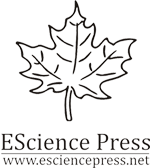To find out the effects of myofascial release in the management of Plantar Fasciitis
DOI:
https://doi.org/10.53576/bashir.002.02.0036Keywords:
Plantar fasciitis , Myofascial release, stretching technique, ultrasound, visual analogue scale, foot functional indexAbstract
Background: Plantar fasciitis is regarded as the supreme reason of inferior heel pain. The pain and discomfort that comes with this condition have an intense impact on physical mobility and function. This study was conducted to evaluate the effectiveness of Myofascial release with conventional physical therapy in patients with chronic plantar fasciitis. Methods: Subjects were clinically diagnosed with chronic plantar fasciitis and then screened after assessing their suitability according to the inclusion and exclusion criteria. Subjects participating in the study were instructed about the nature of the study and the interventions and an informed written consent was taken. Data was collected from the patients visiting the outpatient department of Pakistan Institute of Medical Sciences (PIMS) Islamabad and Mega Medical Complex Hospital Rawalpindi. n=30 patients were divided into two groups using random allocation with n= 15 in each group, Group 1 received MFR with conventional physical therapy (ultrasound and exercise therapy) whereas Group 2 received conventional physical therapy alone. The treatment was given on alternative days for 2 weeks. Results: Within group analysis was done with repetitive measure ANOVA, mean percentage of visual analog scale for both groups were same at the baseline but for experimental group significantly decrease from baseline (8.00) to midline (4.73) and at the end of session (1.40). While, mean percentage of FFI in experimental group significantly decreased from baseline to midline and till the end of the sessions. Between the group analysis was performed with independent t-test and results of VAS and FFI were statistically significant in both groups (p<0.01) but mean values showed that experimental group showed more reduction in pain and improved functional level as compared to control group. Conclusion: Myofascial release technique with conventional physical therapy showed efficacy in reducing the pain intensity and increasing the foot function in chronic plantar fasciitis patients. This study will benefit the patients of plantar fasciitis for better management of their condition and thus overall quality of life of such patients will improve in future.





